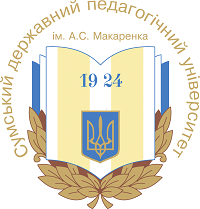THE HISTORY OF THE DEVELOPMENT OF EQUESTRIAN SPORTS AND ITS CURRENT TRENDS
DOI:
https://doi.org/10.32782/olimpspu/2025.2.7Keywords:
equestrian sports, historical development, biomechanical analysis, modern technologies, dressage, show jumping, eventing, adaptive sports, hippotherapy, artificial intelligence, ethical aspects, digitalization, training process, injury prevention, sustainable developmentAbstract
The article investigates the historical development of equestrian sports, tracing its evolution from ancient competitions to a structured activity in the 17th–19th centuries. Initially, equestrian sports served utilitarian purposes, such as military needs, with chariot races in Mesopotamia and Greece. Medieval knightly tournaments laid the groundwork for modern disciplines like dressage, while the modern era saw the rise of racing, show jumping, and eventing. This process involved the establishment of clubs, federations, and standardized rules, integrating equestrian sports into culture and athletics.Modern trends in equestrian sports are analyzed through the lens of technological advancements. The adoption of biomechanical tools, including video analysis systems (Vicon Motion Systems), electromyography (Delsys, Noraxon), and inertial sensors (Xsens), enables detailed motion analysis of horses and riders. These technologies optimize training, reduce injury risks, and enhance performance.Artificial intelligence (AI Motion Analysis) supports personalized training, while digital platforms, such as online broadcasts, broaden the sport’s reach.A significant trend is the emergence of new disciplines and the growing social role of equestrian sports. Adaptive sports and hippotherapy serve as rehabilitation and integration tools for individuals with disabilities, improving coordination and psychological well-being.Ethical considerations, particularly horse welfare, are addressed through FEI regulations and sustainability initiatives, aligning with global sustainable development goals. These shifts enhance the sport’s accessibility and societal impact.The study highlights that modern technologies and innovative approaches are transforming equestrian sports while preserving its traditions. Future research prospects include integrating multisensory systems and artificial intelligence to develop automated motion analysis platforms. Advances in real-time monitoring technologies and hippotherapy studies could refine rehabilitation programs. These directions will contribute to scientifically grounded training processes and improved athletic preparation.
References
Біомеханіка фізичних вправ: навчально-методичний посібник. О.С. Козубенко, Ю.В. Тупєєв. Миколаїв: МНУ імені В.О. Сухомлинського. 2015. с. 215. URL: http://sport.mdu.edu.ua/fks/wp-content/uploads/2018/01/%D0%9F%D0%BE%D1%81%D1%96%D0%B1%D0%BD%D0%B8%D0%BA-%D0%B1%D1%96%D0%BE%D0%BC%D0%B5%D1%85%D0%B0%D0%BD%D1%96%D0%BA%D0%B0.pdf
Олімпійські види спорту : історія та сучасність / за ред. В. М. Платонова. Київ : Науковий світ, 2015. 320 с. URL: https://repository.ldufk.edu.ua/server/api/core/bitstreams/11905d5a-41e0-4f5a-aa17-141cb6a545d8/content
Тищенко В. О., Омельяненко Г. А., Крюков Ю. М., Яковченко А. B. Підвищення ефективності процесу фізич- ного виховання школярів сучасними фітнес-технологіями. Фізичне виховання та спорт. 2022. № 1. С. 36-41. https://doi.org/10.26661/2663-5925-2022-1-05
Penichet-Tomas A. Applied Biomechanics in Sports Performance, Injury Prevention, and Rehabilitation. Applied Sciences. 2024. Vol. 14(24). P. 11623. https://doi.org/10.3390/app142411623
Nagorna V., Mytko A., Borysova O. et al. Innovative technologies in sports games: A comprehensive investigation of theory and practice. Journal of Physical Education and Sport. 2024. P. 585–596.
Clutton-Brock J. Horse Power: A History of the Horse and the Donkey in Human Societies. London : Natural History Museum, 1992. 192 p. URL: https://archive.org/details/horsepowerhistor0000clut
Miller S. G. Ancient Greek Athletics. New Haven : Yale University Press, 2004. 288 p. URL: https://archive.org/details/ancientgreekathl00mill
Futrell A. The Roman Games: A Sourcebook. Malden : Blackwell Publishing, 2006. 272 p. URL: https://content.e-bookshelf.de/media/reading/L-597551-db7f0eb339.pdf
Barber R. The Knight and Chivalry. Woodbridge : Boydell Press, 1995. 416 p.
Sinor D. The Cambridge History of Early Inner Asia. Cambridge : Cambridge University Press, 1990. 518 p. https://pahar.in/pahar/Books%20and%20Articles/Central%20Asia/1990%20The%20Cambridge%20History%20of%20Early%20Inner%20Asia%20ed%20by%20Sinor%20s.pdf
Xenophon. The Art of Horsemanship / transl. by M. H. Morgan. London : J.A. Allen, 2004. 187 p. URL: https://archive.org/download/artofhorsemanshi00xeno/artofhorsemanshi00xeno.pdf
Dowie, Jack. The Economic History Review, vol. 30, no. 2, 1977, pp. 356–57. JSTOR, https://doi.org/10.2307/2595159.
Loch S. The Royal Horse of Europe: The Story of the Andalusian and Lusitano. London : J.A. Allen, 1986. 256 p.
Mackay-Smith A. The Colonial Quarter Race Horse. Middleburg : Colonial Quarter Horse Association, 1983. 328 p. URL: https://www.masshist.org/publications/adams-papers/index.php/view/ADMS-04-12-02-pb-0480
Robichon de la Guérinière F. École de Cavalerie. Paris : Éditions du Patrimoine, 1733 (reprint 2005). 240 p. URL: https://archive.org/details/ecoledecavalerie01lagu/page/n9/mode/2up
Tai W. H., Zhang R., Zhao L. Cutting-Edge Research in Sports Biomechanics: From Basic Science to Applied Technology. Bioengineering. 2023. Vol. 10(6). P. 668. DOI: 10.3390/bioengineering10060668
Wood W., Fields B. Hippotherapy: A Systematic Review and Meta-analysis. Journal of Physical Education and Sport. 2021. Vol. 21(5). P. 2456–2463. URL: https://www.cabidigitallibrary.org/doi/10.1079/hai.2025.0003
Vancini R. L., Andrade M. S., De Lira C. A. B., Russomano T. Recent Advances in Biomechanics Research: Implications for Sports Performance and Injury Prevention. Health Nexus. 2023. Vol. 1(3). P. 7–20. https://doi.org/10.61838/kman.hn.1.3.2
FEI Sustainability Handbook for Event Organisers. Lausanne : Fédération Équestre Internationale, 2022. 48 p. URL: https://inside.fei.org/system/files/FEI%20Sustainability%20Handbook%20-%20For%20Event%20Organisers_2023.pdf
Downloads
Published
Issue
Section
License

This work is licensed under a Creative Commons Attribution-NonCommercial 4.0 International License.







